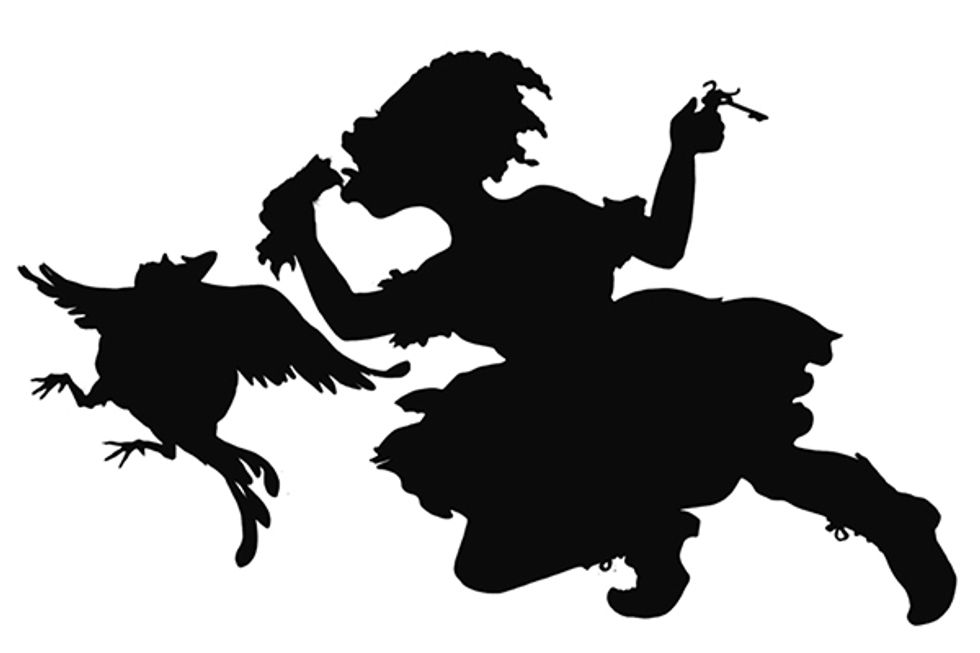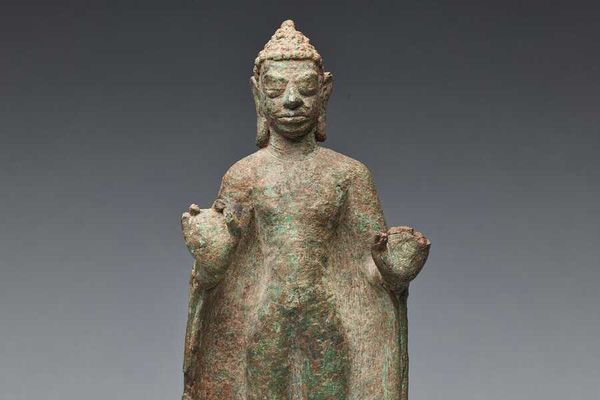For her provocative subject matter and young age, Kara Walker is an unusual artist.
Emancipating the Past: Kara Walker’s Tales of Slavery and Power, on view at the Crocker Art Museum in Sacramento through January 5, 2014, features works by the internationally famous artist who has strong ties to Northern California.
Walker achieved critical acclaim early in her career, becoming a celebrity whose works are in the Art Institute of Chicago, Whitney Museum of American Art, Museum of Modern Art, and the Metropolitan Museum of Art, among others. The award of a “genius grant” from the MacArthur Foundation when she was only 28, and being named one of Time magazine’s most influential people in 2007, assured her standing as one of the most important artists of her generation. For the first time, Walker, who was born in Stockton, California, is the subject of a feature exhibition in Sacramento.
With the silhouette as her medium, Kara Walker challenges us to look anew at our assumptions about race and history. An African American woman who was raised in the South, Walker is keenly aware of the paradox of race in contemporary society. Even today racial matters are subject to ongoing debate, and in Walker's art, reinvention. Her graphic narrative cycles on slavery, the Civil War, and Reconstruction are always elegant in their artful design. But within these tales are graphic, ambiguous, and even vulgar acts. The artist’s antebellum actors, some drawn from ancient myth, enact her worst imaginings embellished with a mordant sense of humor that provokes, directs, and recasts our emotions.
Organized around the holdings of the Jordan Schnitzer Family Foundation, the exhibition explores many aspects of Walker’s art, especially her transformation of the cut-paper silhouette into lyrical and argumentative expression. The figures in her narratives enact her most haunted imaginings, creating a charged space in which to openly consider racial issues. As race remains one of the most difficult conversations to have in America, this exhibition is especially timely amid the discourse on identity today, 150 years after the Emancipation Proclamation.
While many artists approach race in their work, Walker is especially attuned to cultural nostalgia for the antebellum era, having grown up in Stone Mountain, Georgia—home of the modern Klan and the “Confederate Mt. Rushmore.” She uses art for invented stories that are the anti-romance of Gone with the Wind. In doing so, she draws from various sources, including histories of female slaves and escapes to freedom, along with artifacts such as bills of sale and government documents. All are recast in the peculiar light of her vivid imagination.
With 60 works—including prints, a steel cut-out sculpture, and film—Walker illuminates how alive the memory of slavery, Jim Crow, and civil rights remains for many Americans. Walker’s raw imagery forcibly brings the past into the present so that we may continue to learn from history.
Emancipating the Past: Kara Walker’s Tales of Slavery and Power – on view through January 5, Crocker Art Museum, Sacramento. For more info, call (916) 808-7000 or visit crockerartmuseum.org/kara-walker.





















